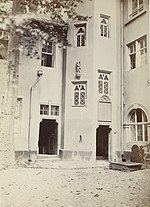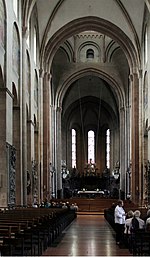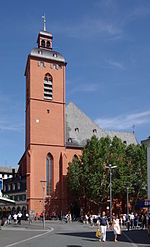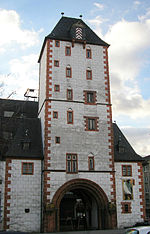Mainz

Mainz, previously known in English as Mentz or Mayence, is the capital and largest city of Rhineland-Palatinate, Germany. Mainz is on the left bank of the Rhine, opposite the place where the Main joins the Rhine. Downstream of the confluence, the Rhine flows to the north-west, with Mainz on the left bank, and Wiesbaden, the capital of the neighbouring state Hesse, on the right bank. Mainz is an independent city with a population of 219,501 and forms part of the Frankfurt Rhine-Main Metropolitan Region.Mainz was founded by the Romans in the 1st century BC as a military fortress on the northernmost frontier of the empire and provincial capital of Germania Superior. Mainz became an important city in the 8th century AD as part of the Holy Roman Empire, capital of the Electorate of Mainz and seat of the Archbishop-Elector of Mainz, the Primate of Germany. Mainz is famous as the birthplace of Johannes Gutenberg, the inventor of a movable-type printing press, who in the early 1450s manufactured his first books in the city, including the Gutenberg Bible. Mainz was heavily damaged in World War II; more than 30 air raids destroyed around half of the old town in the city centre, but many buildings were rebuilt post-war. Mainz is notable as a transport hub, for wine production, and for its many rebuilt historic buildings. One of the ShUM-cities, Mainz and its Jewish cemetery is part of the UNESCO World Heritage Site.
Excerpt from the Wikipedia article Mainz (License: CC BY-SA 3.0, Authors, Images).Mainz
Markt, Mainz Altstadt
Geographical coordinates (GPS) Address Nearby Places Show on map
Geographical coordinates (GPS)
| Latitude | Longitude |
|---|---|
| N 49.999444444444 ° | E 8.2736111111111 ° |
Address
Markt 9
55116 Mainz, Altstadt
Rhineland-Palatinate, Germany
Open on Google Maps











